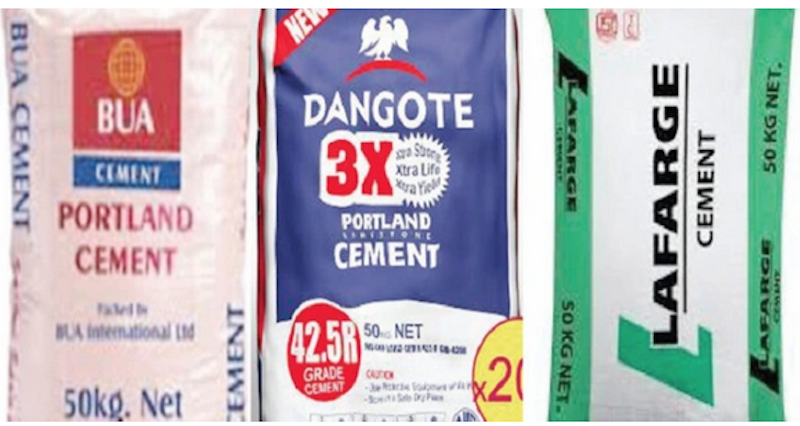In 2025, Nigeria’s construction sector continues to rely heavily on three major cement producers: Dangote Cement, BUA Cement, and Lafarge Africa. These companies dominate the industry, shaping the pace of infrastructure development and influencing the cost of building homes and public works. But as prices fluctuate and the economy feels the strain, many Nigerians are asking: which brand currently offers the most affordable cement?
Cement prices vary significantly across the country, depending on location, brand, and distribution channel. Here’s a breakdown of the current market rates:
1. Dangote Cement
Depot Price: ₦8,000 – ₦9,000 per 50kg bag
Retail Price: ₦9,900 – ₦10,500 per bag
Dangote continues to hold the largest share of the market, backed by a robust distribution network and consistent product quality. However, its prices remain on the higher end.
Sample Retail Price: ₦10,450 (Available at Shop Structure City)
2. BUA Cement
Depot Price: ₦5,500 – ₦7,900 per 50kg bag
Retail Price: ₦8,550 – ₦9,800 per bag
BUA is positioned as a cost-effective alternative, with ongoing investments aimed at expanding capacity and maintaining price stability—even in the face of volatile market conditions.
Sample Retail Price: ₦5,500 (Available at Shop Kusnap)
3. Lafarge Africa (A Holcim Company)
Depot Price: ₦8,500 – ₦9,500 per 50kg bag
Retail Price: ₦9,100 – ₦10,500 per bag
Lafarge offers reliability and consistency, often preferred for large-scale projects. Its prices sit in a similar range to Dangote, though regional availability can affect the final cost.
Sample Retail Price: ₦9,785 (Available at Shop Buildings & More)

Why Prices Differ
Several key factors influence cement pricing across Nigeria:
Exchange Rates: Fluctuations in the Naira’s value increase the cost of imported equipment and raw materials, driving up production costs.
Fuel and Logistics: Cement manufacturing is energy-intensive. Rising fuel costs and poor road infrastructure add to transportation expenses, affecting the final retail price.
Demand and Supply: Periods of high demand—such as during construction booms—often push prices higher. Conversely, excess supply can lead to price reductions.
Government Policies: Regulatory decisions, such as import duties, tax incentives, or public appeals for price reductions, can directly impact the market.
Who Bears the Brunt?
Construction Firms: Fluctuating cement prices complicate budgeting, often resulting in project delays or cost overruns.
Real Estate Developers: Rising material costs lead to higher property prices, putting home ownership further out of reach for many Nigerians.
Government Projects: Inflation in building materials increases the likelihood of delays in public infrastructure projects, stalling economic and social development.
What Can Be Done?
To cushion the impact of unpredictable pricing, stakeholders can explore several long-term strategies:
Energy Diversification: Shifting to alternative energy sources like gas or renewables could help manufacturers stabilize production costs.
Infrastructure Upgrades: Better roads and transport systems would ease delivery logistics and reduce regional price disparities.
Encouraging Market Competition: Opening the market to more players may drive down prices through healthy competition.
Government Incentives: Tax relief and targeted subsidies could lower production costs and retail prices without compromising quality.
Cement prices in Nigeria remain fluid, shaped by local and global forces. While Dangote maintains its lead, BUA appears to be the most affordable option at the moment. Lafarge continues to offer a solid middle ground. As the nation looks to build its future, stabilizing cement prices will require collaboration across sectors—ensuring that construction remains both active and affordable in the years ahead.



